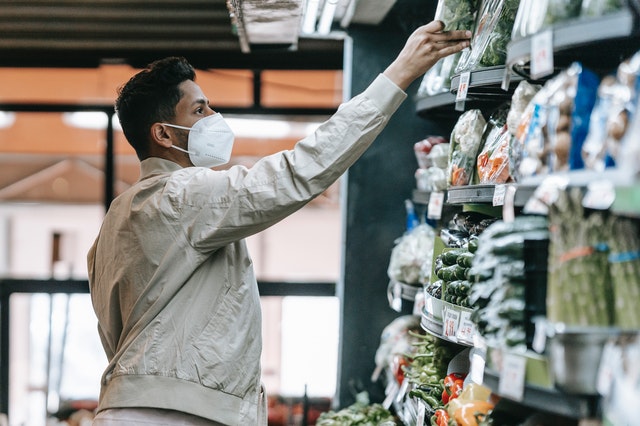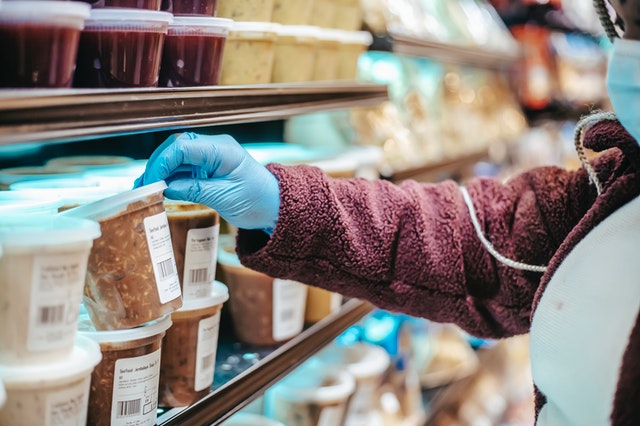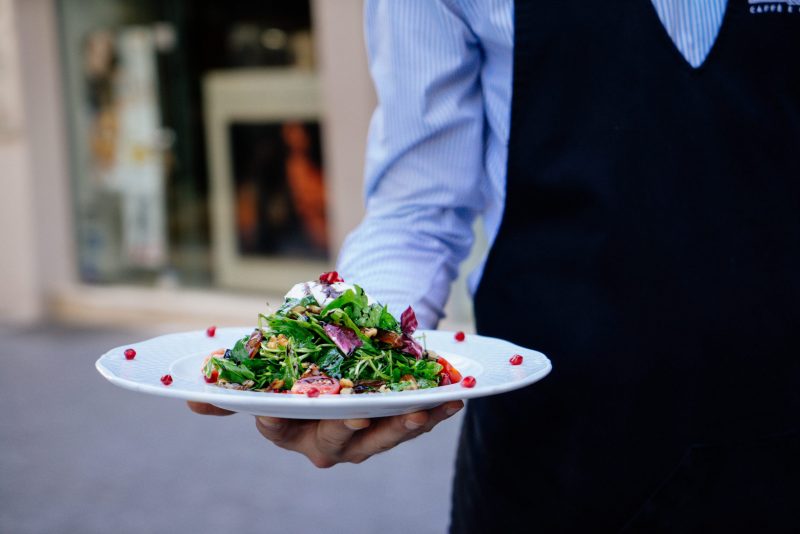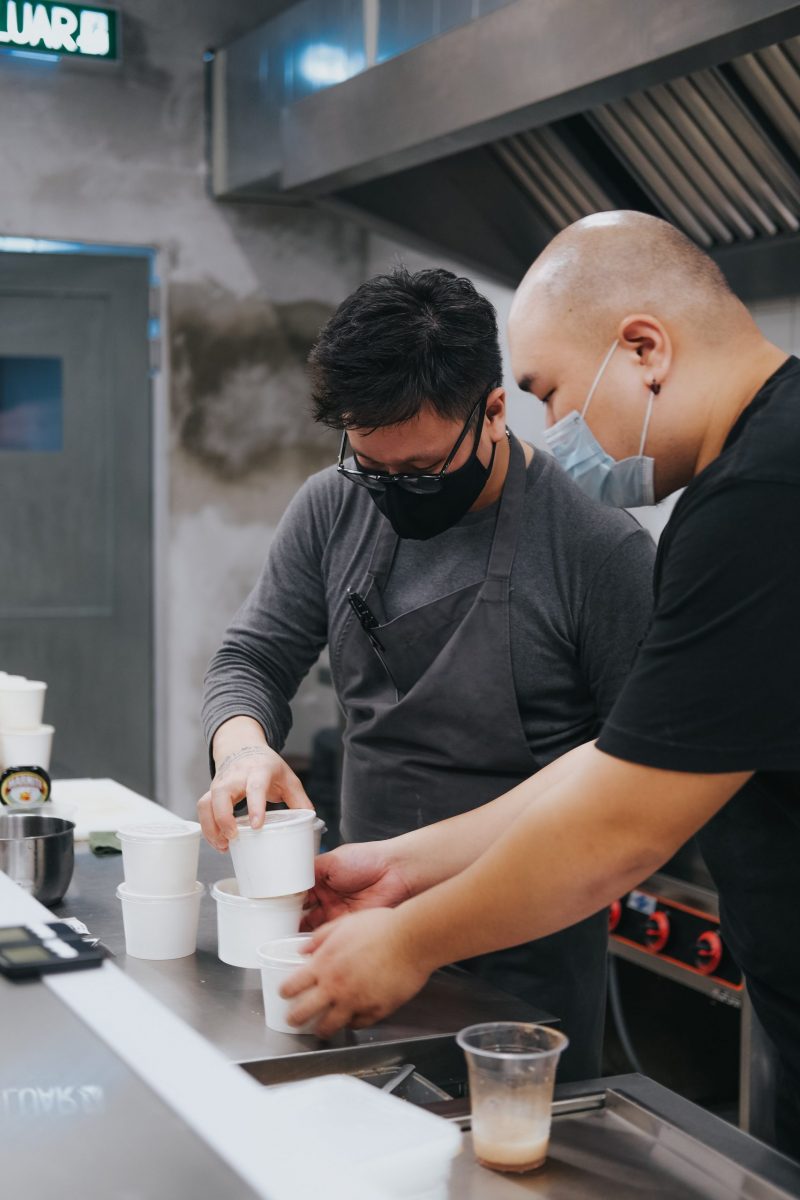Food safety must be ensured from the import stage, the imported food needs to ensure the origin to the processing stage. In terms of procedures, food and beverage businesses in general, and restaurant and cafeteria owners, in particular, must have a certificate of food hygiene and safety when operating officially. So what is food safety and what role does it play in the operation of food-service businesses? In this article, Servsafe-Prep will show you more information!
What Is Food Safety?
Food safety or food hygiene and safety in the narrow sense is a science used to describe the handling, processing, preservation, and storage of food by methods of prevention and control of diseases caused by food. Food safety also includes a number of practices and practices that need to be followed in order to avoid serious potential health risks.
In a broad sense, food safety contains issues that need to be handled related to ensuring food hygiene in order to ensure the health of consumers. This is a very big problem and risk that developed and developing countries have to face, including some big countries like the US, the UK, and the EU…
Hygienic foods need to be tested and undergo a strict product announcement process, with the consent of the competent authority. Companies specializing in the food supply, food processing, and food trading at the market also need to ensure food hygiene and safety in order to optimize the service to the customer.

The Importance Of Food Safety
Great impact on human health
If people use unhygienic food, this is the source that can cause diseases and affect human health. There will be no foods that are considered to have nutritional value if they do not ensure safety and hygiene.
If using unsafe food for a long time, not only affects health but also affects the race of the nation. In the immediate future, there may be acute poisoning incidents with noticeable symptoms. However, if the accumulated toxic substances are often forgotten in some parts of the body, one day the disease will be very difficult to treat, and may even cause deformities and deformities for future generations.
Standards of food-service businesses
It can be said that food safety is an indispensable measure for the reputation and success of any food-service business. It is necessary to ensure that all foods – additives, packaging, as well as production lines related to food products, operate in accordance with food safety standards. Only in this way can we ensure that qualified food products reach consumers.
Reasons For Not Ensuring Food Safety
The process of raising, growing, and producing food
Food derived from diseased livestock, poultry, or aquatic products living in contaminated water. Vegetables and fruits are fertilized with too much chemical fertilizers, using pesticides that are not allowed or allowed but are not correct in terms of dosage or isolation time. Plants grown in contaminated soil or irrigated with fresh manure or contaminated sewage.
- Use growth stimulants and antibiotics.
- Improper processing
- The process of slaughtering, processing livestock and poultry, and the process of collecting food, vegetables, and fruits are not in accordance with regulations.
- Using additives is not in accordance with the regulations of the Ministry of Health to process food.
- Share cutting boards or keep raw food with cooked food.
- Use a dirty cloth to wipe the eating utensils.
- Contaminated food processing tables, dining tables, or eating utensils. Do not wash your hands before handling food, especially when preparing food for children. You can read more about ServSafe Handwashing: How to Wash Your Hands Properly? to know how to wash your hands when cooking.
- Food handlers suffering from infectious disease, diarrhea, abdominal pain, vomiting, fever, cough, or skin infection.
- Wash food and eat utensils with contaminated water.
- Cook undercooked or unheated food before eating.
Improper use and storage
- Using crockery, enameled iron, recycled plastic…contaminated with lead to store food.
- Leave food overnight or for sale all day at room temperature.
- Food is not tightly covered, allowing dirt, rodents, flies, and other animals to come in contact and cause contamination.
- Because preserved food is not cold enough or not hot enough, bacteria can still grow.
Learn more about how to store food safely at Servsafe Food Storage Chart Recipes
Food Safety Standards
So are there standards to know if food is safe and hygienic? Currently, in the world, each country will have its own laws and regulations in the field of food safety and hygiene. However, they are all based on the following criteria:
HACCP (Hazard Analysis and Critical Control Points)
HACCP stands for Hazard Analysis and Critical Control Points. It is a systematic, risk-based approach to preventing biochemical and physical contamination of food in production, packaging, and distribution environments. The HACCP concept is designed to combat health hazards by identifying potential food safety problems before they occur instead of testing the food for hazards after the fact. This standard requires contaminant control at several key points in the food production process and strictly follows hygiene rules during production and distribution.
GMP (Good Manufacturing Practices)
GMP is an internationally recognized quality assurance guideline standard for the manufacture of food products, beverages, pharmaceuticals, dietary supplements, cosmetics, and medical devices. These guidelines set forth general principles that a manufacturer establishment must follow to ensure that products are always of high quality in the processing, production, and distribution stages. It includes mandatory food product testing at critical control points.
SQF Food Safety Program
The SQF Code meets the needs of all suppliers in the food industry through an internationally recognized certification system that emphasizes the systematic application of HACCP to control food safety hazards. whole food. The implementation of the SQF management system addresses the food safety requirements of the buyers and provides solutions for businesses supplying the local and global food markets.
GMO-Free
This standard has been designed in conjunction with representatives of feed manufacturers and the food industry, certification bodies, interest groups, and representatives of the public. It assists production facilities in fulfilling regulatory requirements for “GMO-free” labeling and establishes unified audits for certification bodies.
IFS Global Markets
IFS Global Markets is a standardized food safety assessment program for retailers as well as industry-branded food products. The program aims to assist “small and/or underdeveloped businesses” in developing their food safety management system and taking the first step toward the implementation of the IFS Food Standard.
BRCGS for food packaging materials
The Global Standard for Packaging Materials is designed to protect consumers by providing a common basis for certifying companies that supply packaging to food manufacturers.
ISO 22000
This is the first international standard to implement a certified food safety management system. It includes interactive communication, system management, and hazard control. It can be used by any organization regardless of its size or position in the food chain.
What Should Be Done To Ensure Food Safety?

The main manufacturers and processing facilities will be one of the important factors contributing to the results of ensuring food hygiene and safety. Specific issues that need to be addressed include:
Standardized processing
Food processors, producers, and traders must not be infected with infectious diseases, must undergo regular health checks, and be fully updated with food hygiene and safety knowledge. In the process of working, always wear a mask, properly protect, and comply with measures to ensure safety and hygiene.
Standardized tools
- Must be fully equipped with business tools such as cups, chopsticks, forks, and knives… must be washed and stored dry.
- There are specialized utensils for each type of food. Sufficient equipment to control factors affecting food safety, throughout the food business.
- Having equipment to prevent insects and harmful animals; do not use rat poison, or insect killer, in business areas, food preservation.
- Only use cleaning agents that are allowed to be used in daily life and food processing, do not use industrial detergents.
Comply with government regulations on food safety
State agencies have developed specific regulations on food safety and hygiene, setting standards that foods need to meet. Therefore, manufacturers and processing facilities should strictly comply with the regulations and standards according to the law. Thus, it was possible to minimize the spread of dirty food on the market.
No banned substances are used during the processing
This is one of the most urgent and necessary solutions to ensure food hygiene and safety today. Because of the fact that the use of detergents, toxic chemicals, and additives … in the food processing process is the cause of dangerous diseases that seriously affect health, it can even lead to death.
Make sure the food has all the necessary information
The certificate of food hygiene and safety is one of the important documents indispensable for manufacturers and processing facilities. This is also the condition and the basis for confirming whether this establishment is qualified to provide safe food or not.
Carefully store cooked food
If you want to pre-process foods or want to keep leftovers, they must be stored at temperatures that are hot (near or above 140°F), or cold (near or below 50°F). This is an important rule if you want to preserve food for 4 or 5 hours. All baby food should not be preserved. A common mistake, leading to cases of food poisoning is due to leaving a large amount of food in the refrigerator. In a refrigerator with too much food, cooked food does not cool enough quickly. When food remains warm for a long time (above 50°F), bacteria thrive, fast enough to reach disease-causing levels.
Do not mix raw and cooked food
Cooked food can become contaminated through contact with raw food. For example, don’t prepare raw meat and then use the same cutting board and knife to cut cooked meat. Doing so will reproduce food-borne pathogens.
Ensure the safety of facilities
- The area must be large enough to arrange the necessary areas such as Food display area, processing area, storage area, preservation area, and must be convenient to transport raw materials and food.
- Structures of buildings, ceilings, floors, and areas must be solid and constructed of materials suitable to the nature and scale of the business; ensure safety and hygiene, avoid harmful microorganisms, insects, and destructive animals from entering and residing.
- Business premises must be built in a location that is not flooded; not affected by harmful animals, insects, microorganisms; unaffected by areas contaminated with dust, toxic chemicals, or other sources of pollution.
- Food business areas, hygiene areas, protective changing areas, and ancillary areas must be built separately, in accordance with food business requirements.
- Fully equipped with waste and garbage collection tools; Make sure it is sealed, has a lid, and is cleaned regularly.
- The sanitary area of the restaurant must be built separately from the food business area. The toilet door must not open to the food processing or storage area.
Always keep staff’s hands clean when handling food
Wash hands thoroughly before handling food and after doing other activities that disrupt the process, such as after going to the bathroom or coming into contact with other sources of contamination. After handling raw meat products, such as fish, meat, or poultry, be sure to wash your hands thoroughly before handling other foods. And if your hand has a wound, it must be bandaged and covered before preparing food. And always remember that pets in the house such as dogs, cats, birds … are often dangerous pathogens that can be transmitted through your hands into food.
Use clean water
Clean water is an important factor in food and beverage processing. If you don’t have a clean water supply, you can boil the water before using it for food processing or making ice for drinks. Be careful with any kind of water used to prepare children’s meals
FAQs
- Choose processed foods for their safety
- Cook the meal thoroughly.
- Consume prepared dishes as soon as possible.
- Cooked meals should be stored with care.
- Cooked dishes should be completely reheated.
- Avoid coming into touch with raw and cooked meals.
- Hands should be washed several times.
- Clean all kitchen surfaces thoroughly.
Conclusion
In conclusion, prioritizing food safety is essential for maintaining good health and preventing foodborne illnesses. By following proper hygiene practices, storing food at the correct temperatures, and practicing safe cooking methods, we can ensure that the food we consume is safe and free from contamination. Remember, safe food handling is everyone’s responsibility.
The above article has provided you with basic information about Food Safety as well as its importance and standards for ensuring the safety of food in food service businesses. We all hope that this information can help you in the process of operating F&B facilities.
Visit our website to get free ServSafe practice test for your coming exam! To download, visit our website for your IOS or Android device.



